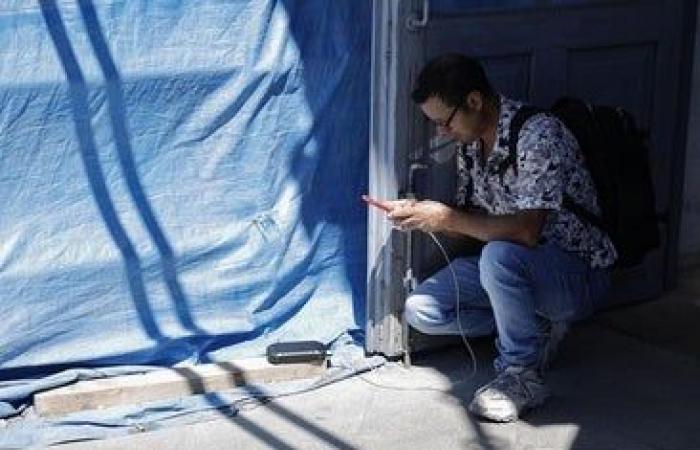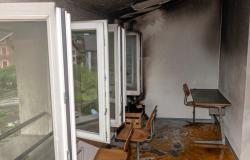Seven days after the historic blackout that left the peninsula, the Basque industry continues to quantify economic damage. While the rest of the sectors … They have resumed their activity with relative normality, the factories continue to accuse the operational stop and the rupture of logistics flows. The reverse translates into millionaire losses and compromises the financial stability of companies. A situation that drives electrointensive companies to prepare claims to demand compensation.
The point is not enough to press a switch to start a workplace. Each forced stop involves restarting complex processes, recalibrating machinery and assuming extra costs due to contractual breaches or loss of raw materials. The abrupt electric interruption last Monday also left its mark in the form of material damage to equipment and facilities.
The industry, which represents 24.2% of Euskadi GDP, was totally stopped for almost 24 hours. The main companies in the territory, consulted by the mail, could not resume their activity normally until Tuesday at noon, after undertaking a race to counterreloj for containing losses that, in many cases, are already considered irreversible. Lehendakari himself, Imanol Pradales, told the electro -intense sector as the great victim by the blackout, referring to the “material losses” suffered by the companies.
In some facilities, on the other hand, the damage is not measured only during hours, but on full days of production. This is the case of Petronor. In the Muskiz Refinery the activation processes of the FCC unit – the heart of the conversion of crude oil into products such as gasoline and diesel – did not begin until Friday, due to the strict security protocols necessary to stabilize the plant and avoid operational risks. During the blackout, the application of this containment plan caused a dense smoke in the torches – a controlled combustion to burn waste gases – that has already become one of the most symbolic images of the electricity cut in Bizkaia.
The companies consulted by this newspaper – the bulk of the Basque productive fabric – still do not dare to make an estimate of the costs caused by the blackout. They still collect information, evaluate the impact and study possible legal routes to claim losses that, according to CEOE, reach 1.6 billion throughout the country.
The Alavesa Vidrala firm has already made public its intention to submit a lawsuit for the “millionaire losses” suffered, taking advantage of the Visit of Lehendakari to its plant last Wednesday. And it will not be an isolated case. The Guipuzcoan employer Adegi, before the cascade of demands that is expected, offers legal assistance to their associates with the objective to demand the repair of economic damage. The problem, however, is to determine who is responsible for assuming that responsibility and if insurers, electricity or public administration are arranged – or legally obliged – to respond.
The key, from the entrance, goes through identifying the origin of the ruling because whoever is responsible must assume the costs of the break. Among the experts of the energy sector there is some consensus to point out an error in the planning by Red Electrica, of which the State is a majority shareholder through the SEPI. However, the central government insists on keeping “all possibilities” open, without ruling out a cyber attack and pointing to electricity due to a possible bad praxis, which has generated bewilderment and discomfort in the sector.
The insurers specialized in business risks ask, for the moment, “patience” to their clients. Ander Bilbao, head of industry in the northern part of the firm Asterra Pariets, explains that since Monday they recovered the current in their offices they have received “a flood” of consultations of the affected companies. However, he admits that they still cannot offer a clear response, since the origin of the blackout conditions any coverage.
Business coverage
Bilbao explains that policies differentiate between the damages that companies have suffered. The first habitual condition in these cases is electrical damage: machinery that is broken by abrupt disconnection, electronic components that fail or the need to replace parts. Standard insurance, initially and always attending to the drafting of each contract, would cover these incident.
To this are added the damage to other material goods, such as the refrigerated products that have broken the cold chain or industrial ovens where the laundry has solidified, forcing to stop the process and, in some, to discard material. This type of incidents, initially, would also be contemplated in the policies.
The problem arises when demanding the loss of benefits linked to the interruption of public services. That is, what companies could have won if the blackout had not happened. It is a coverage that has contracted almost all industrial groups. However, “it is not a blank check,” since in most cases it is only activated if the origin of the problem is linked to material damage suffered by the supplier.
If the blackout had been caused by a fire in a substation, for example, insurers would assume the cost. But if, as it seems, the responsibility falls in the electricity grid, the Basque industrial sector would only have the judicial way to claim damage. To this is added another obstacle: many policies only cover prolonged interruptions and the cut last Monday, of about an hour in most Euskadi, did not reach the minimum threshold required in most contracts.
-
1.600
Millions is what the CEOE estimates that companies have lost on the occasion of the blackout in the whole of Spain. It is a figure equivalent to 0.1% of the gross domestic product. -
Unequal advance
The Basque industry works to counterreloj since last Monday to return to normal. However, he does it unequally. Companies like Petronor continue to prepare their plant after a total break of their production. -
24,2%
Euskadi’s GDP depends directly on the industrial sector, which reflects the magnitude of last Monday’s impact on a sector already threatened by Trump’s tariffs. -
Origin of the blackout
Conventional insurance only covers the loss of benefits if the origin is linked to material damage suffered by the supplier. If the responsibility is Red Eléctrica, on the other hand, companies would have to resort to judicial means. -
30
Hours was the port of Bilbao between Monday and Tuesday without receiving trains of goods due to the problems to electrify the road. A situation that meant logistic delays.
Electric work in their own report on the ‘Blackout’
The electricity sector is entrenched before government pressure, which points to possible business negligence such as the cause of ‘Blackout’. The clash of versions about what the blackout caused anticipates a political and judicial battle for the millionaire consequences of the blackout. The Executive, who insists not to rule out any hypotheses, distrust the operators and has opted to involve the European Commission in the analysis of what happened. This suspicion towards the performance of the electrical companies has led the Sánchez government to claim all the operators of the oscillation records detected in the network before the blackout, as well as the technical data of its distribution control centers. All this, at a time when consensus among the experts of the sector grows in pointing out to the coupling of renewables to the system as one of the key factors that could trigger the ruling. The objective of the Executive and Red Electrica is, in any case, to know “what is the generation position that failed and what were the system parameters.”








